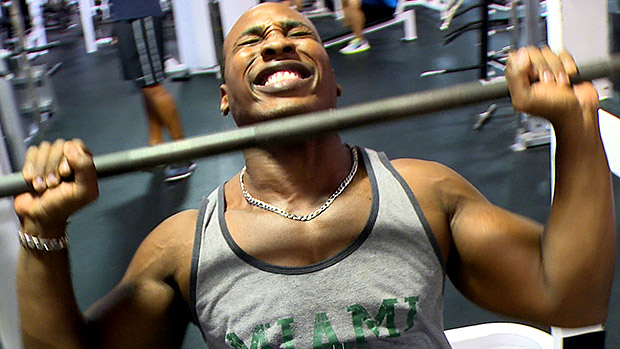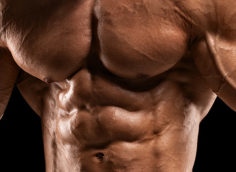Lift hard for long enough and you'll eventually have some joint pain. Whether it's the knee, shoulder, lower back, or wrist, something will probably flare up.
Now, you could pop some pain killers and grind through it until your flare-up becomes a real injury... or you could do the smart thing and manage your injury. If you're ready to check your ego, use some of these strategies.
Increase Your Volume and Decrease Weight
Your muscles may be able to take heavy daily lifting, but that doesn't mean your joints can. Dropping the heavy lifting and increasing your reps will not only give your joints a break, it'll allow your nervous system to recover while you shift focus towards muscle growth.
The amount of effort you put into your workouts doesn't need to change just because you're going lighter. Taking shorter rests and increasing your reps will create more metabolic stress which will lead to greater hypertrophy. Also, higher reps will get the heart pumping hard which provides extra blood flow and circulation to your cranky joints.
Partial Reps
Partial reps create more time under tension and emphasize the "pump" when lifting. Limiting your range of motion to the middle two-thirds of your lift and avoiding the lockout will relieve excess strain on your joints. As an example, here's the neutral, close-grip incline press:
Use Bands as Upper-Body Assistance
This can prevent excessive stress at the end range of motion on your pull-ups and push-ups. They're a great way to add both higher volume and partial reps while allowing your body to be in constant motion for your calisthenics exercises.
Banded Partial Push-Up
Banded Partial Pull-Up
Even if you're capable of repping out 50 push-ups or 20 pull-ups, bands push your volume even higher and keep a smooth muscular contraction throughout your sets.
Deload Your Spine for Lower-Body Work
If you feel like you've shrunk a couple inches after compressing your spine with heavy squats, it may be time to deload. You can still work the squat movement without all the spinal compression.
One of the best ways is with the belt squat. The belt squat takes the spine out of the equation because a belt is placed around the hips and the weight is applied from the waist down.
No belt squat machine? Rig together your own variation. One way to do it is to use a couple straps, a hook, some boxes, a weight belt, and a heavy kettlebell or two.
Kettlebell Belt Squat
Ideally, keep your butt pushed against a wall. This will provide extra stability and allow you to use your glutes and hamstrings to a greater extent.





